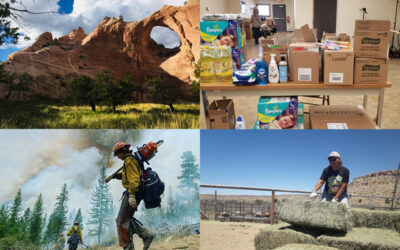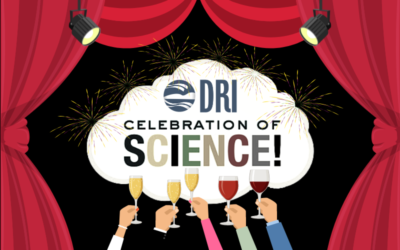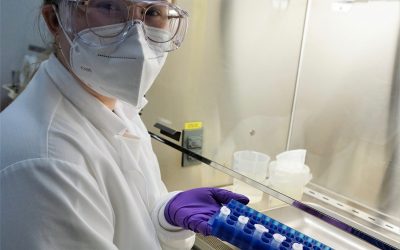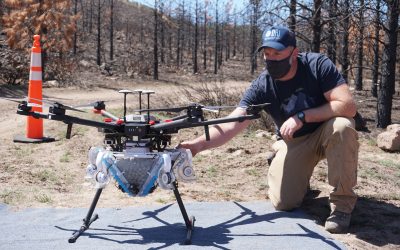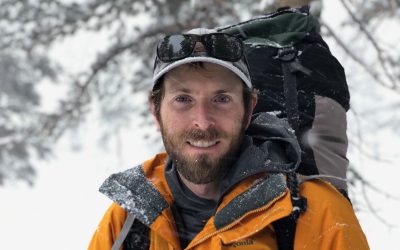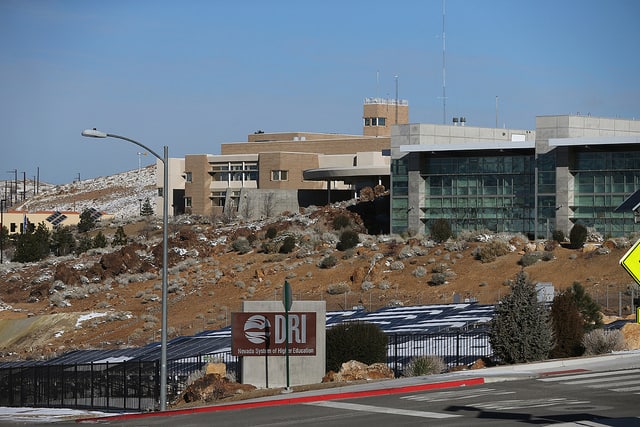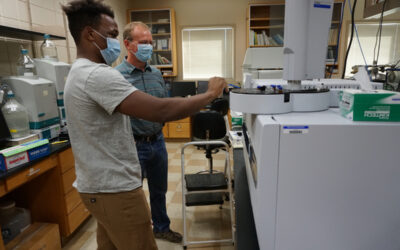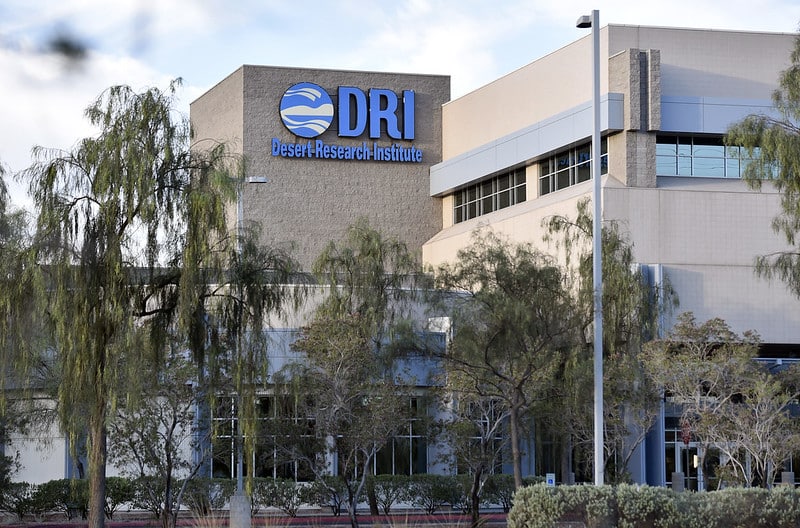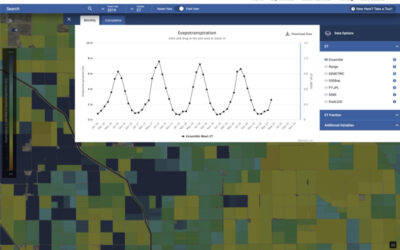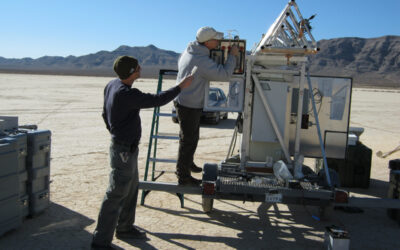Behind the Science Blog
DRI’s “Behind the Science” blog featuring our people and projects
Read the stories below to learn more about the amazing people and projects happening at DRI.
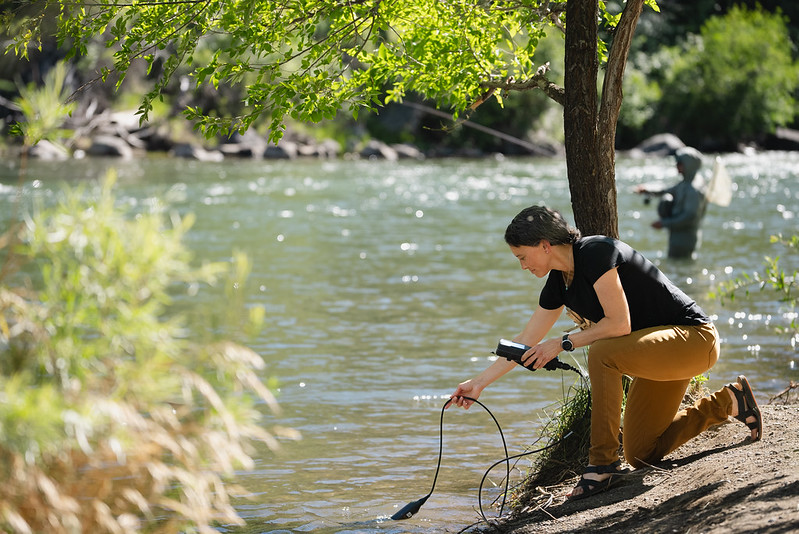
DRI Launches Collaborative New Project Investigating PFAS and Microplastics for Department of Defense
DRI’s Monica Arienzo, Director of the Microplastics and Environmental Chemistry Laboratory, was recently awarded $250,000 by the Department of Defense to investigate laundering and textile degradation as a possible source of PFAS and microplastic pollution. The one-year grant will fund laboratory studies and analysis led by Arienzo, with DRI’s Daniel Saftner and Yeongkwon Son contributing to the work. Matt Reeves of Western Michigan University is partnering with the DRI scientists for the project.
From COVID-19 to Drought: Collaborating on Emerging Challenges Across Indian Country
The Native Waters on Arid Lands project’s COVID-19 Working Group is a network of partners working together to solve problems and share information across Indian Country.
DRI Honors Outstanding Contributions of Faculty and Staff at 2021 Celebration of Science
Each year, the Desert Research Institute (DRI) honors the incredible commitment and dedication of our faculty and staff through an award ceremony called the Celebration of Science. This year’s event was held virtually and recognized the winners of...
Meet Graduate Researcher Natasha Sushenko
Meet graduate researcher Natasha Sushenko and learn about her work in DRI’s Environmental Microbiology Laboratory in this interview with DRI’s Behind the Science Blog.
Restoration by Drone: DRI and Partners Test New Method for Reseeding Native Forests after Wildfire
Scientists from the Desert Research Institute (DRI) partnered with the Sugar Pine Foundation, Flying Forests, and the Carson Ranger District of the Humboldt-Toiyabe National Forest to test a new method for reseeding burned slopes by drone.
Meet Graduate Researcher Dylan Person
Meet DRI graduate researcher Dylan Person and learn about his work with the Cultural Resource Management Program in this interview with DRI’s Behind the Science Blog.
Meet Nathan Chellman, Ph.D.
Meet DRI scientist Nathan Chellman and learn about his work in the Ice Core Laboratory in this interview with DRI’s Behind the Science Blog.
New DRI projects for 2021 include microplastics, microfossils, snowmelt risk, and solute transport
New DRI projects for 2021 include microplastics, microfossils, snowmelt risk, and solute transportFEB 26, 2021RENO & LAS VEGAS, NEV.Introducing the winners of DRI's 2021 Institute Project Assignment (IPA) competition.Each year, the Desert...
What’s in the plume? Researchers compare health impacts of smoke from wildfires versus prescribed burns
wildfires often burn hotter and their plumes may include chemicals released by burning houses or other structures.
DRI welcomes new graduate students to Reno and Las Vegas campuses
Each year, the Desert Research Institute (DRI) welcomes new graduate students from the University of Nevada, Reno (UNR) and University of Nevada, Las Vegas (UNLV), who work under the direction of DRI faculty on our northern and southern campuses to...
Xiaoliang Wang Receives 2020 Benjamin Y. H. Liu Award for Aerosol Research
Reno, Nev. (Oct 7, 2020) – Xiaoliang Wang, Ph.D. of the Desert Research Institute (DRI) in Reno, Nev. is the winner of this year’s Benjamin Y. H. Liu Award from the American Association of Aerosol Research (AAAR). He was recognized for this honor...
Making Sense of Remote Sensing: A Q&A with Matt Bromley
Matt Bromley, M.S., is an Assistant Research Scientist with the Division of Hydrologic Sciences at the Desert Research Institute (DRI) in Reno, and specializes in GIS and remote sensing. He holds a B.S. in Environmental Science and a M.S. in Geography from the University of Nevada, Reno. He is a native Nevadan, an Army veteran, and has been a member of the DRI community for ten years.
New study explores relationship between dust and Valley Fever
Vic Etyemezian, Ph.D., is the Interim Vice President of Research at the Desert Research Institute (DRI) and specializes in the study of dust emissions. Vic has been a member of the DRI community since 1999, when he started his career at DRI as a post-doctoral scientist with the Division of Atmospheric Sciences in Las Vegas. He recently published a paper in the International Journal of Environmental Research and Public Health titled “Valley Fever: Environmental Risk Factors and Exposure Pathways Deduced from Field Measurements in California,” working alongside colleagues Antje Lauer, Ph.D. (California State University Bakersfied), George Nikolich, M.S. (DRI), and others, so we connected with Vic to learn more about the project.

